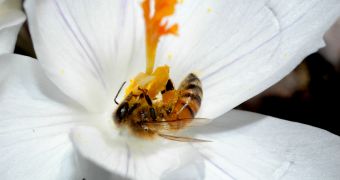The fact that bees answer to a queen has long since been established. For years, scientists have been trying to understand how these scaled-up and improved versions of the regular worker bees came to be, and a new study, by researchers at the Michigan State University, now promises to aid this effort.
The team, working together with colleagues at the Wayne State University, was able to discover that a single gene separate queens from workers in a honeybee colony. Details of their investigation appear in the latest issue of the esteemed journal Biology Letters.
One thing that was made abundantly clear in the new paper is that the gene in question is responsible for triggering an array of molecular pathways in the bee that eventually lead to both leg and wing development. In regular bees, the actions of this gene are indispensable to pollen-carrying capabilities.
The gene is called Ultrabithorax, or Ubx, and it leads to the emergence of a smooth spot on the hind legs of worker bees, where the insects can deposit their pollen baskets. Elsewhere on the legs, 11 neatly spaced bristles emerge to act as a comb of sorts for collecting pollen.
“This gene is critical in making the hind legs of workers distinct so they have the physical features necessary to carry pollen. Other studies have shed some light on this gene’s role in this realm, but our team examined in great detail how the modifications take place,” explains MSU entomologist Zachary Huang.
In queen bees, Ubx does not produce this effect. In a series of experiments, researchers were able to capture bees, and use genetic manipulation techniques to silence the gene's expression. What they noticed was that the pollen basket and other hind leg features disappeared from the worker bees.
Additionally, the growth speed of pollen combs was significantly reduced, while the size of special structure called pollen presses – which aid the bees in compacting pollen for easier handling – was diminished as well.
“The pollen baskets are much less elaborate or completely absent in bees that are less socially complex. We conclude that the evolution of pollen baskets is a major innovation among social insects and is tied directly to more-complex social behaviors,” Huang argues.

 14 DAY TRIAL //
14 DAY TRIAL //